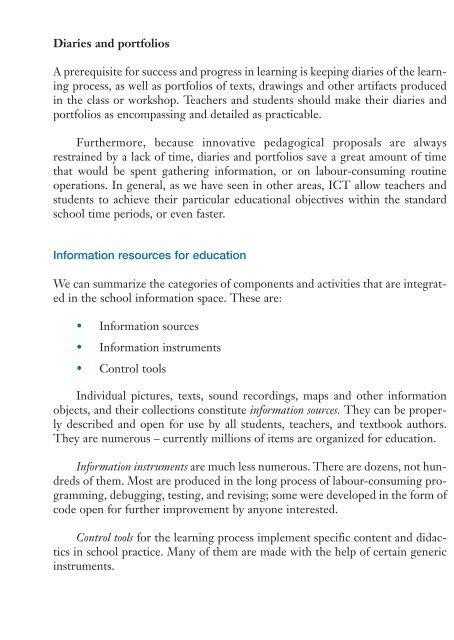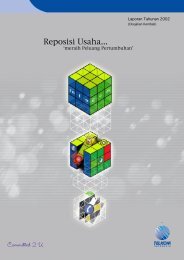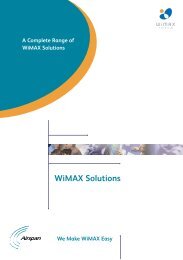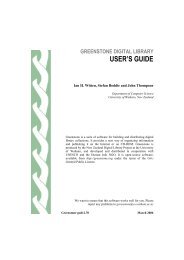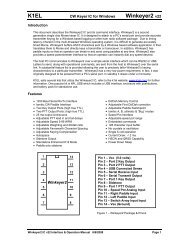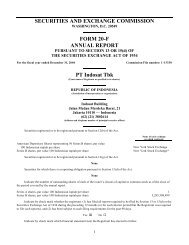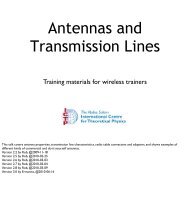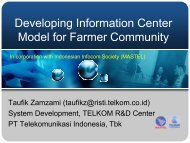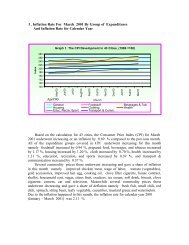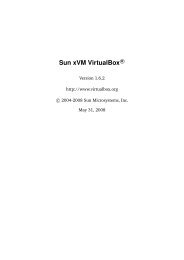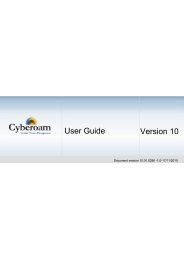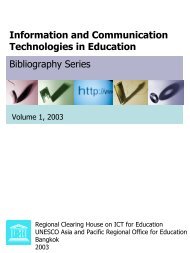Information and communication technologies in schools: a ...
Information and communication technologies in schools: a ...
Information and communication technologies in schools: a ...
You also want an ePaper? Increase the reach of your titles
YUMPU automatically turns print PDFs into web optimized ePapers that Google loves.
144<br />
ICT IN SCHOOLS<br />
A HANDBOOK FOR TEACHERS<br />
Diaries <strong>and</strong> portfolios<br />
A prerequisite for success <strong>and</strong> progress <strong>in</strong> learn<strong>in</strong>g is keep<strong>in</strong>g diaries of the learn<strong>in</strong>g<br />
process, as well as portfolios of texts, draw<strong>in</strong>gs <strong>and</strong> other artifacts produced<br />
<strong>in</strong> the class or workshop. Teachers <strong>and</strong> students should make their diaries <strong>and</strong><br />
portfolios as encompass<strong>in</strong>g <strong>and</strong> detailed as practicable.<br />
Furthermore, because <strong>in</strong>novative pedagogical proposals are always<br />
restra<strong>in</strong>ed by a lack of time, diaries <strong>and</strong> portfolios save a great amount of time<br />
that would be spent gather<strong>in</strong>g <strong>in</strong>formation, or on labour-consum<strong>in</strong>g rout<strong>in</strong>e<br />
operations. In general, as we have seen <strong>in</strong> other areas, ICT allow teachers <strong>and</strong><br />
students to achieve their particular educational objectives with<strong>in</strong> the st<strong>and</strong>ard<br />
school time periods, or even faster.<br />
<strong>Information</strong> resources for education<br />
We can summarize the categories of components <strong>and</strong> activities that are <strong>in</strong>tegrated<br />
<strong>in</strong> the school <strong>in</strong>formation space. These are:<br />
• <strong>Information</strong> sources<br />
• <strong>Information</strong> <strong>in</strong>struments<br />
• Control tools<br />
Individual pictures, texts, sound record<strong>in</strong>gs, maps <strong>and</strong> other <strong>in</strong>formation<br />
objects, <strong>and</strong> their collections constitute <strong>in</strong>formation sources. They can be properly<br />
described <strong>and</strong> open for use by all students, teachers, <strong>and</strong> textbook authors.<br />
They are numerous – currently millions of items are organized for education.<br />
<strong>Information</strong> <strong>in</strong>struments are much less numerous. There are dozens, not hundreds<br />
of them. Most are produced <strong>in</strong> the long process of labour-consum<strong>in</strong>g programm<strong>in</strong>g,<br />
debugg<strong>in</strong>g, test<strong>in</strong>g, <strong>and</strong> revis<strong>in</strong>g; some were developed <strong>in</strong> the form of<br />
code open for further improvement by anyone <strong>in</strong>terested.<br />
Control tools for the learn<strong>in</strong>g process implement specific content <strong>and</strong> didactics<br />
<strong>in</strong> school practice. Many of them are made with the help of certa<strong>in</strong> generic<br />
<strong>in</strong>struments.


